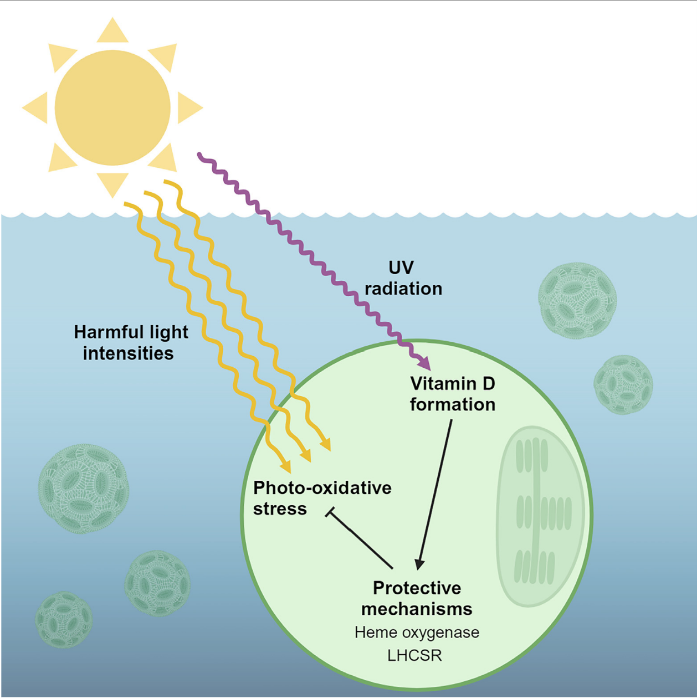A sustainable method to produce vegan Vitamin D using the microalga Emiliania huxleyi. This approach enables efficient production of both Vitamin D2 and Vitamin D3, along with additional nutritional values, in a dry biomass form suitable for nutritional supplements. By optimizing cultivation conditions and utilizing a two-phase cultivating system with bacteria, this method offers an eco-friendly, animal-free alternative to traditional Vitamin D sources.
- Nutritional Supplements: Provides a plant-based, vegan-friendly source of Vitamin D2 and D3 and additional nutritional benefits (e.g., calcium and other sterols) for humans and animals.
- Food Fortification: Enables fortification of foods with Vitamin D and calcium derived from a sustainable and natural source.
- Vegan and Sustainable: Provides Vitamin D3 from a non-animal source, ideal for vegan consumers and sustainability-conscious markets.
- Enhanced Production Efficiency: The two-phase cultivation system maximizes Vitamin D yields through optimized interaction with bacteria without compromising purity.
The biological pathways and optimal cultivation conditions for Vitamin D production in E. huxleyi were identified, with further studies planned to validate the method for commercial use and investigate additional applications.

Eliason, Or et al, The photo-protective role of vitamin D in the microalga Emiliania huxleyi. iScience 27, 109884 (2024). https://doi.org/10.1016/j.isci.2024.109884.


